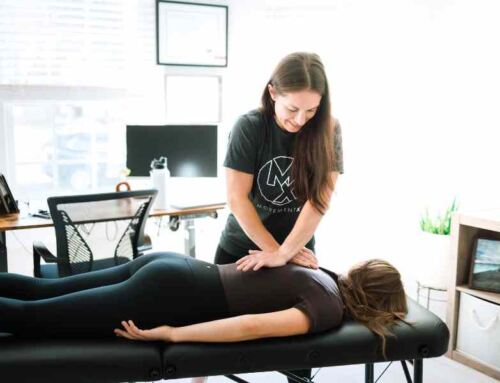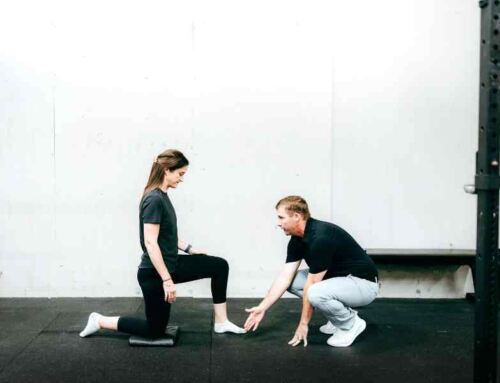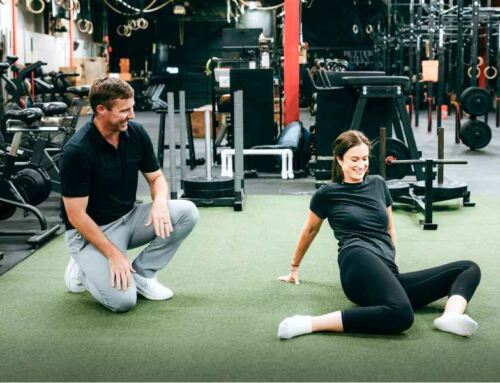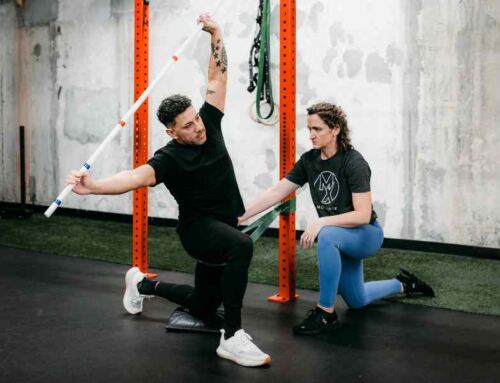If you’ve trained for a Hyrox race, you already know it’s not just another workout. Eight 1 kilometer runs, eight brutal functional stations (ski erg,sleds, wall balls, burpees, rowing, farmers caries, lunges) all performed at near redline intensity.
Hyrox is part endurance race, part strength test, part mental gauntlet.
And while the competition looks like chaos, the athletes who thrive in it follow structure, not random hard work. The best Hyrox competitors stay healthy, strong, and fast because they use periodization, a system for planning training phases over time.
As a sports physical therapist, I see Hyrox athletes every week battling the same issues… knee pain, shoulder strain, low back pain, chronic fatigue, and mental burnout. And almost every case ties back to the same problem: too much intensity, too soon, for too long.
The solution? A long-term block periodization approach that trains smarter, not just harder.
The 3 Major Energy Systems Used in Hyrox
Hyrox performance demands all three major energy systems, and successful training contains a balanced mix that includes each one. They are:
Aerobic System (Heart Rate Zones 1–2)
This is your endurance engine. You rely on oxygen to produce energy efficiently. Aerobic work builds your foundation by increasing your metabolic efficiency. It’s the system that lets you recover between stations and maintain pace across all eight runs.
Typical heart rate (HR) range: 60–75% of your max heart rate (HR max)
Anaerobic System (Heart Rate Zone 5)
This kicks in during heavy sled work, , wall balls, and max efforts. It uses stored energy (ATP) without oxygen, generating quick power but also generating fatigue and lactate buildup as byproducts.
Typical HR range: 90–100% of HR max
Lactate Threshold Zone (Zone 4)
The “sweet spot” for Hyrox racing. This is the effort where you can sustain high output just below redline. The zone that separates elite pacing from burnout.
Typical HR range: 80–90% of your max HR
Most Hyrox athletes spend too much time training in the anaerobic zone and not enough time building their aerobic base or controlling threshold efforts. The result? Overtraining, early fatigue, and slower long-term gains.
A periodized plan strategically alternates these zones, developing endurance, efficiency, and power in a sustainable way.

Where Hyrox Athletes Get Hurt (The Usual Suspects)
Most Hyrox athletes don’t get injured because of a single bad rep. They get injured from chronic overload. The most common areas of injury I see in my physical therapy practice are:
- Knees: Patellar tendon irritation from lunges, wall balls, and sled work
- Shoulders: Overuse from overhead wall balls and pushing mechanics
- Low Back: Core fatigue and poor hip mobility leading to compensations
- Ankles/Feet: Cumulative running impact, especially with fatigue-altered form
Take the above, add in the mental aspect (the “go hard or go home” culture), and many athletes also experience early stages of Overtraining Syndrome (OTS) which is characterized by:
- Chronic fatigue
- Apathy
- Poor motivation
- Plateaus in progress
But if Hyrox is a hard race, why doesn’t the mantra of “just do the hard work”… work?
Traditional “linear” training based on doing more reps, more miles, or heavier weights every week doesn’t fit the hybrid nature of Hyrox. You’re trying to build both endurance and strength simultaneously, which creates an interference effect which can be summarily defined as:
When everything’s trained hard all the time, nothing truly adapts. Instead, fatigue accumulates, technique breaks down, and progress stalls.
This is why elite hybrid athletes (and smart recreational ones) use a technique called block periodization.
What Is Block Periodization?
Think of your training year as a story told in four chapters. Each chapter has a clear purpose, building toward peak performance without burning you out.
Block 1: Accumulation (Build Your Base)
Duration: 4–6 weeks
Focus: Aerobic conditioning, muscle endurance, movement quality
Training Intensity: Moderate (Zone 2–3)
This phase is about building tissue tolerance and durability through stronger tendons, more resilient joints, and better core endurance.
While training, you’ll use higher-rep strength work (10–15 reps), moderate loads, and tons of movement variety.
Think tempo lunges, sled marches, carries, mobility drills, easy runs.
Block 2: Transmutation (Get Strong & Specific)
Duration: 2–4 weeks
Focus: Max strength and power endurance
Intensity: High (Zone 3–4)
In this phase, volume decreases, but load and intensity rise. You’ll perform lower-rep sets (4–6 reps) with heavier loads, emphasizing sled pushes/pulls, heavy squats, and efficient transitions.
Block 2 is where your body learns to apply the base you built.
Block 3: Realization (Peak & Simulate)
Duration: 1–2 weeks
Focus: Speed, power, and race-pace simulations
Intensity: Very high
Block 3 is your peak phase. You’ll run at competition pace, practice transitions, and fine-tune pacing.
Volume drops sharply so your body can express the strength and endurance you’ve built.
Block 4: Restoration (Active Recovery)
Duration: 1 week
Focus: Deload, mobility, recovery
Intensity: Low
This is the non-negotiable phase most athletes skip. Think of Block 4 as your system’s “software update.” Light movement, yoga, or Zone 1 cardio lets tissues recover and the nervous system reset.
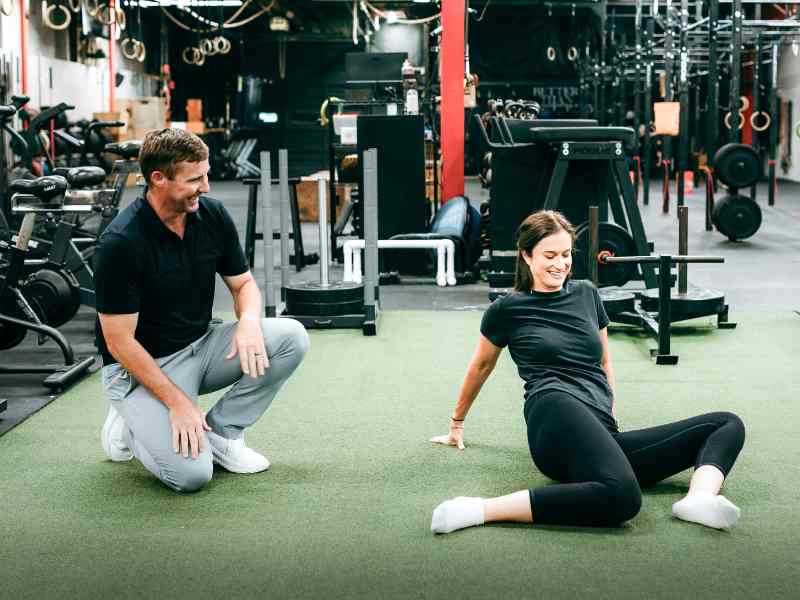
Two Big Killers & How to Prevent Them: Low Back Pain & Overtraining
Within your Hyrox training progression, there are 2 groups of injuries and progress-killers that I see time and time again as a specialized sports and Hyrox physical therapist.
Here’s what they are, and how to prevent them.
Build a Bulletproof Core and Low Back
Low back pain in Hyrox isn’t usually about weakness. It’s about endurance failure.
As fatigue builds, the core stops stabilizing, and your spine takes the hit. So, it becomes paramount that you train your core to last, not just lift.
Movements to mix into your training for a bulletproof core and lower back are:
- Loaded Carries: Farmer Carries, Suitcase Carry, Front-Rack Carry
- Anti-Rotation Work: Pallof presses, Planks (with reach)
- Hip Mobility Drills: 90/90 Transitions, Deep Lunges, Glute Bridges
Keep rest short (30–45 sec) and focus on posture under load, because that’s what translates to race-day performance.
Manage Fatigue Before It Manages You
Overtraining rarely happens overnight. It creeps in wearing masks of poor sleep, heavy legs, lack of motivation, declining times.
Here’s how to catch it early:
RPE (Rate of Perceived Exertion)
What It Measures: How hard a session feels (1-10 scale)
Why It Matters: Rising RPE without added workload = early fatigue
HRV (Heart Rate Variability)
What It Measures: Nervous system recovery
Why It Matters: A sudden drop means you’re not fully recovered
Mood Check (POMS or Journal)
What It Measures: Mental energy and motivation
Why It Matters: Low vigor or apathy often appear before physical breakdown
If you notice two or more warning signs (fatigue that lingers, motivation dips, HRV drops) it’s time for a Restoration Week, not another max-effort session.
The Long-Game Plan: Building Season by Season
The Hyrox calendar never stops, but your body needs cycles. Here’s how a full-year framework might look:
Off Season (GPP)
Focus: Aerobic Base + Structural Strength
Training Goal: Build durability and tissue tolerance
Pre-Season (SPP)
Focus: Power and speed endurance
Training Goal: Increase performance at race pace
In-Season
Focus: Maintenance and skill reinforcement
Training Goal: Stay sharp without overreaching
Post-Season
Focus: Recovery and reflection
Training Goal: Restore physically and mentally
Smart athletes don’t chase constant PRs. They plan seasons, allowing the body to adapt and the mind to stay engaged.
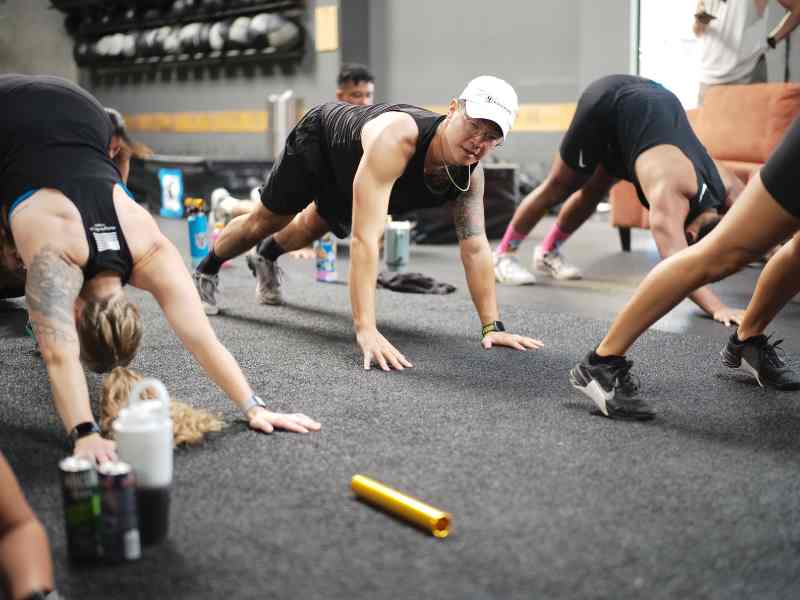
Key Takeaways for Every Hyrox Athlete
No matter the level you’re competing or training at, everything I’ve shared with you so far can be summed up into these points. Integrate them into your training mentality to see improvement.
- Plan in Phases. Structure 3–6 month blocks rather than random 6–8 week programs.
- Prioritize Recovery. The Restorative block is where long-term gains actually happen.
- Track Your Metrics. Use RPE, HRV, and subjective energy levels weekly.
- Don’t Skip Mobility. Hip and thoracic mobility are insurance policies for your spine and knees.
- Respect Fatigue. If effort feels high but data doesn’t match, back off — not burn out.
Build Resilience, Not Just Fitness
True Hyrox performance isn’t just about pushing harder. It’s about balancing stress and recovery with precision.
By embracing a long-term, block-based approach, you’ll not only peak higher but stay healthier, more consistent, and more motivated season after season.
Because the best Hyrox athletes don’t just train for one race. They train for longevity.
About the Author
Dr. James Cousler is a Doctor of Physical Therapy and Athletic Trainer based in Reston, VA. He specializes in orthopedic rehab, sports conditioning, and injury prevention for a diverse clientele, including high school and collegiate athletes, busy professionals, and weekend warriors. With a passion for teaching the human movement system, James is dedicated to empowering his patients to reduce pain, boost strength and mobility, and build consistent habits to move well and live their best life.




